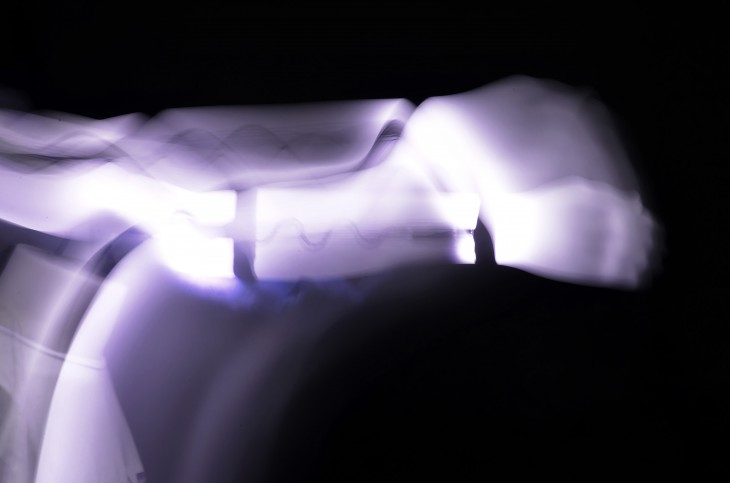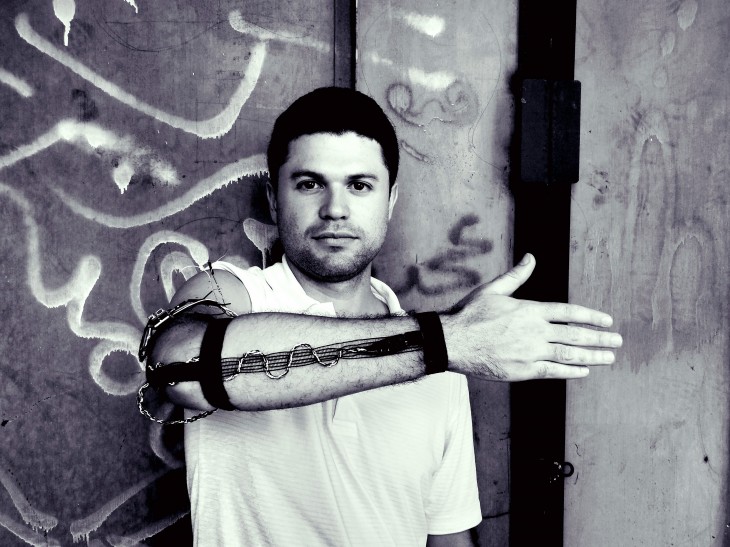Ginga is a wearable technology that turns body movement into sound.
 Our body is the result of thousands of generations of intense evolution. When we use modern technologies, our bodies are reduced to a chair and a finger click. Design creates behaviors. A new approach is needed to develop the technologies of the future, starting from our physical reality, giving emergent technologies a human shape.
Our body is the result of thousands of generations of intense evolution. When we use modern technologies, our bodies are reduced to a chair and a finger click. Design creates behaviors. A new approach is needed to develop the technologies of the future, starting from our physical reality, giving emergent technologies a human shape.
Prototype Ginga is an experiment conceived in Capoeira, the Brazilian dance/martial art. The “players” dance to the typical Capoeira music, and using a set of sensors in the arms and legs, they will change the music as they dance. ‘‘Ginga’’ is the name of the basic movement of Capoeira. The concept of the project is to read the body movement and establish new relations between our natural behaviours and future technology. People recognize music instinctively and we can easily assign movement to rhythm. With this project, the relation between music and dancer is reverted as the movement is now generating the sounds. The set of sensors amplify the human output, entering a loop in which the output of the body movement becomes a new input for the dancer, in the form of sound and music. This results in an interaction that adds complexity to the experience.
The experiences we share determine the value we give them. Technology is as good as how it make human experiences more complex, letting us communicate in new ways, generating questions and curiosity.

Sensor Setup
The device works by attaching a flex sensor in the elbow to detect the extension of the arm and the act of opening the body. An Read More
